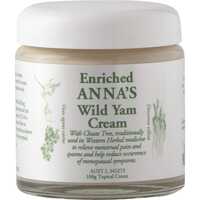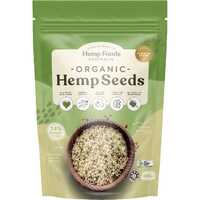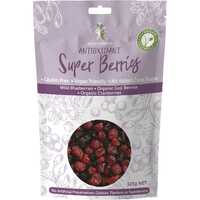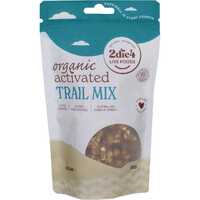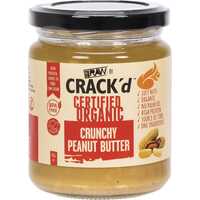Snack foods play an important role in the modern diet. They give us energy between meals and help us feel satisfied while working and playing. However, commercial snacks are often severely compromised, with excessive sugar and salt, unhealthy fat content, and unwanted preservatives. To enjoy better quality snack foods, you need to be mindful about what you eat. When you alter your mind and change your eating habits, you can enjoy great healthy snacks like fruits, vegetables, nuts, seeds, cereals, and smoothies.
Let's look at healthy snacking options in the modern world. We'll look at the history of snack foods, analyse the problems associated with commercial products, and list healthy alternatives to enjoy throughout the day.
A Short History of Snacking
Snacks are nothing more than the foods we eat between meals. While the content and frequency of these foods have varied throughout human history, people have always eaten something to keep their energy levels up. From ancient times, people typically consumed leftovers from previous meals and natural foods like fruits that required no preparation. In modern times, however, an entire industry has developed around snacks.
The modern snack food industry started in the United States during the 19th century, and since then, it has exploded all over the world. The industry evolved with the help of technology, with new ingredients providing more options, factories boosting production levels, and preservatives improving shelf life. These developments were accelerated in the 20th century, with new sweet and savoury delights making their way around the world. These new snacks were often loaded with sugar and salt, and more often than not, they were also heavily processed.
1904 was a big time for snack foods, with hamburgers, hot dogs, cotton candy, and waffle cones being just some of the things introduced at the St. Louis World's Fair. New snack foods continued to be introduced throughout the 1900s, from ice creams and biscuits to potato chips and confectionery. The snack food industry took off in the post-WWII environment and ramped up again in the 1980s and 90s. Healthy snacks have emerged as an exciting trend in the new millennium as more people look to fuel their bodies without compromising their health.
What's Wrong with Commercial Snacks?
The commercial snack food industry is incredibly large and diverse. The most common products on the market include natural items such as fruits, nuts, and seeds; and processed foods like biscuits, chips, chocolate, and ice cream. There are also many popular snacks that combine natural and artificial ingredients, including bars, bites, cakes, and yogurts. Overall, however, the modern-day snack industry is heavily reliant on processing. A range of ingredients and techniques are used to increase shelf life and boost profit margins, many of which you can avoid or swap for healthy alternatives.
Problematic ingredients in commercial snack foods include:
Excessive sugars
Sugar is essential to human health, but most people consume too much of it. While the natural sugars in fruits, vegetables, and honey are great in moderation, the free sugars added to snack foods can easily get out of control. Sweet processed snacks are typically loaded with sugar, so try to limit your intake of soft drinks, chocolate, and other confectionery.
Unhealthy fats
Fats are also essential to human health, but they're not all equal. For example, saturated fats are great in moderation, so you should eat lots of nuts, seeds, avocados, and olive oil. Trans fats are an entirely different story, so try to limit your intake of processed savoury snacks, deep-fried foods, biscuits, pies, frozen pizza, and margarine.
Excessive salt
Most people consume way too much salt, and snack foods are largely to blame. Salt levels are normally very high in processed meats, chips, flavoured crackers, and cheese. Along with limiting your consumption of salty snacks, eating more potassium is important. When these two things are out of balance, they contribute to high blood pressure and more risk of heart disease and stroke.
Preservatives and additives
Commercial snacks often include a wide range of preservatives and other additives, along with sugars, fats, and salt. These ingredients vary widely between products, so remember to read the packaging and look for alternatives if desired. Some of the worst offenders include corn syrup (HFCS), monosodium glutamate (MSG), sodium nitrate, and potassium bromate.
Developing Healthy Snacking Habits
If you want to avoid unhealthy snack foods, you need to develop new eating habits. While breaking old patterns can be difficult, it all starts with paying more attention to what you eat. Think about what you're eating, look closely at the labels, and make healthy choices that prioritise health and well-being. One of the best ways to alter your diet is to change where you shop. For example, you can shop at dedicated health food stores and fruit and vegetable retailers instead of purchasing meal ingredients and snacks from supermarkets and service stations.
In order to make good choices, you need to follow good advice. The internet is full of great information, including advice from health food companies and recommendations from government departments. While you don't have to agree with everything they say, the Australian Dietary Guidelines are full of great information. You should eat good quality ingredients from different categories to boost your nutritional intake.
Healthy snacking habits can be altered through mindfulness. More than anything else, paying attention and making good personal choices based on what's important to you is important. Shop mindfully instead of grabbing things off the shelf, choose different retailers if you can't find what you need, and make purposeful snacking choices. Things like caffeine and sugar can be very addictive, so you may need to step outside your comfort zone before you lock in new healthy habits. Eating your snacks mindfully is also important, so make some time, slow down, and avoid distractions.
Healthy Snack Food Options
Snack foods are meant to be quick, portable, and satisfying. Most of the time, people don't want to do any work between meals, which is why commercial products have become so popular. Pre-packaged and ready-to-eat, processed snacks are often too convenient to ignore. However, if you want to eat healthier foods between meals, you have three basic choices:
- First, you can choose traditional snacks that come straight from nature without any processing. These include things like fruits, vegetables, nuts, and seeds.
- Second, you can choose packaged snack food alternatives made by health food companies. The health food industry is bigger than ever, and a huge range of bars, bites, and confectionery products are on the market.
- The third option involves a little work, but you can easily make your own snacks at home from basic healthy ingredients, including salads, smoothies, and shakes.
The following foods make fantastic snacking options:
Fruits and vegetables
Fruits and vegetables are the original snack food. Along with leftovers from the night before, our ancestors would have fuelled long days hunting, gathering, and farming with foods straight from the ground. Along with favourite snacks like apples, oranges, and bananas, you can also eat less sweet items such as carrots and capsicum. If you want to add a little extra flavour, healthy dips and fresh vegetables make a great snack any time of the day.
Nuts and seeds
Nuts and seeds are the ultimate portable snack food. They are the original superfood because they pack lots of nutrition into a small, easy-to-consume package. Nuts and seeds are great when you're out walking in nature or just doing chores around town. Some of the most nutritious examples include almonds, hazelnuts, cashews, walnuts, flax seeds, chia seeds, and hemp seeds. Along with eating them alone, nuts and seeds are great when added to cereals, salads, and smoothies.
Cereals
Cereals are a central part of many people's diets, both in the morning and throughout the day. Instead of buying commercial products, which are often full of preservatives and sugars, you can make your own healthy cereals at home. Creating the ideal cereal blend is just a matter of combining ingredients with popular choices, including oats, rice, corn, wheat, nuts, and seeds. If you're feeling lazy, there are lots of great cereals available from health food stores.
Health bars and balls
If you want a delicious ready-made snack without unwanted preservatives, there are lots of health bars and bites on the market. As the health food industry forges ahead by leaps and bounds, bars and balls are one of the fastest-growing market segments. Common ingredients used to make these products include whole grains, rolled oats, protein powder, cashews, macadamias, peanuts, chia seeds, flax seeds, and hemp seeds. These products often use natural sweeteners as an alternative to sugar.
Smoothies and shakes
If you're looking for a liquid snack, you can't surpass the nutritional goodness of smoothies and shakes. These drinks are easy to make at home from basic ingredients and are widely available at juice bars and some restaurants. Common smoothie and shake ingredients include milk, bananas, strawberries, yogurt, protein powder, and various nuts and seeds. If you don't drink dairy, you can use an alternative milk product like almond milk, soy milk, or coconut milk.
If you're looking for healthy snacks from some of the world's best health food companies, we have everything you need. From protein powders to natural nuts and seeds, from health bars and bites to delicious sweets, Healthy Being is your number one destination for wholesome, trusted snacks! So check out our website today and enjoy free shipping options across Australia and worldwide delivery!


 Certified Organic
Certified Organic Vegan Friendly
Vegan Friendly  Vegetarian
Vegetarian Organic Ingredients
Organic Ingredients Dairy Free
Dairy Free Gluten Free
Gluten Free Keto Friendly
Keto Friendly

















